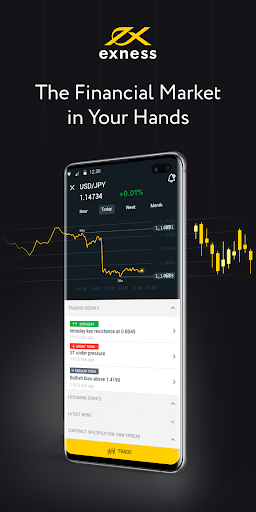
Understanding Margin Requirements Exness: What You Need to Know
Margin requirements are a crucial element in trading, particularly for those using leverage. For traders considering margin requirements exness https://latam-webtrading.com/en/exness-uganda/, understanding these requirements can be a game-changer in how you approach your trades. In this article, we will delve into the concept of margin, how it works at Exness, and the importance of managing your margin requirements effectively to minimize risk.
What is Margin in Trading?
Margin in the trading context refers to the amount of money that a trader must deposit with a broker to open and maintain a leveraged position. It acts as a security deposit or collateral against the trades you conduct. Since forex and online trading typically involve significant leverage, understanding margin is essential for effective risk management.
Types of Margin
There are several types of margin that traders need to be aware of:
- Initial Margin: The amount required to open a new position. This is a percentage of the total trade value and varies depending on the leverage offered by the broker.
- Maintenance Margin: The minimum amount of equity a trader must maintain in their margin account to keep a position open. If the account equity falls below this level, the trader may receive a margin call.
- Free Margin: The amount of equity in a trading account that is not tied up in margin for open positions. Free margin is important for new trades and covering potential losses.
- Usable Margin: The total margin a trader can use to open new positions, which is calculated based on the account balance and current open trades.
Exness Margin Requirements
Exness offers various margin requirements depending on the type of account, asset, and leverage selected by the trader. This flexibility allows users to pick a margin structure that best suits their trading strategy.
Leverage Options
Exness provides a wide range of leverage options, which can significantly impact margin requirements. Traders can choose leverage ratios from 1:1 to up to 1:2000, allowing for greater control over their trades. With higher leverage, lower margin is required to open positions, but this also increases risk significantly. Thus, understanding and selecting the appropriate leverage is critical.

Calculating Margin
To calculate the margin requirement for a specific trade, the formula is quite straightforward:
Margin Requirement = (Trade Size) / (Leverage)
For instance, if a trader wants to open a position worth $10,000 with a leverage of 1:100, the required margin would be $100.
Importance of Margin Management
Managing your margin requirements is vital in trading. If you do not maintain sufficient margin, your broker may initiate a margin call, requiring you to deposit more funds to keep your positions open. If you’re unable to meet this requirement, your broker may close your positions, resulting in a potential loss.
Strategies for Effective Margin Management
Here are a few strategies to manage your margin effectively:
- Regular Monitoring: Keep an eye on your margin level and free margin. Regular checks can help prevent unexpected margin calls.
- Diversification: Spread your investments across different assets to minimize risk and improve margin management.
- Education: Understand the implications of higher leverage and remain educated about market conditions and how they impact your margin.
Conclusion
Margin requirements at Exness are a vital part of navigating the trading landscape effectively. By understanding margin types, their implications, and how to manage them properly, traders can enhance their chances of success while minimizing potential risks. Always remember that trading is a journey that requires continuous learning and adaptation.